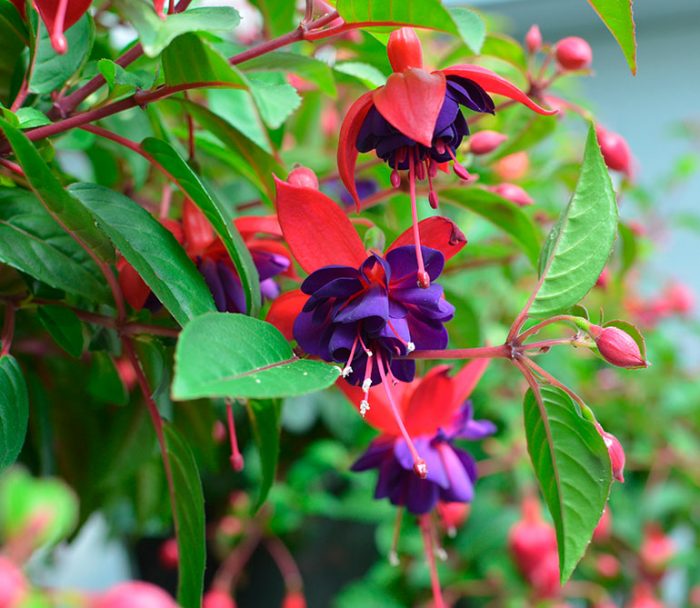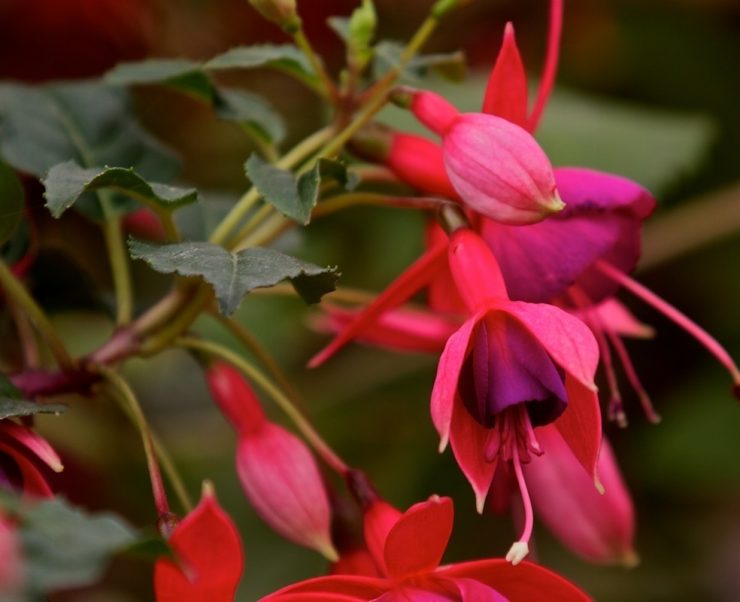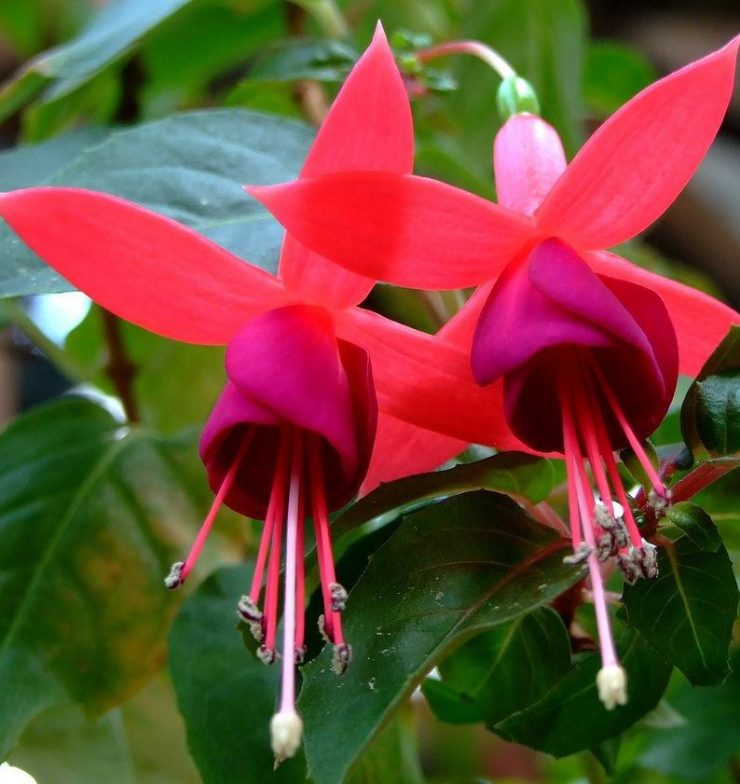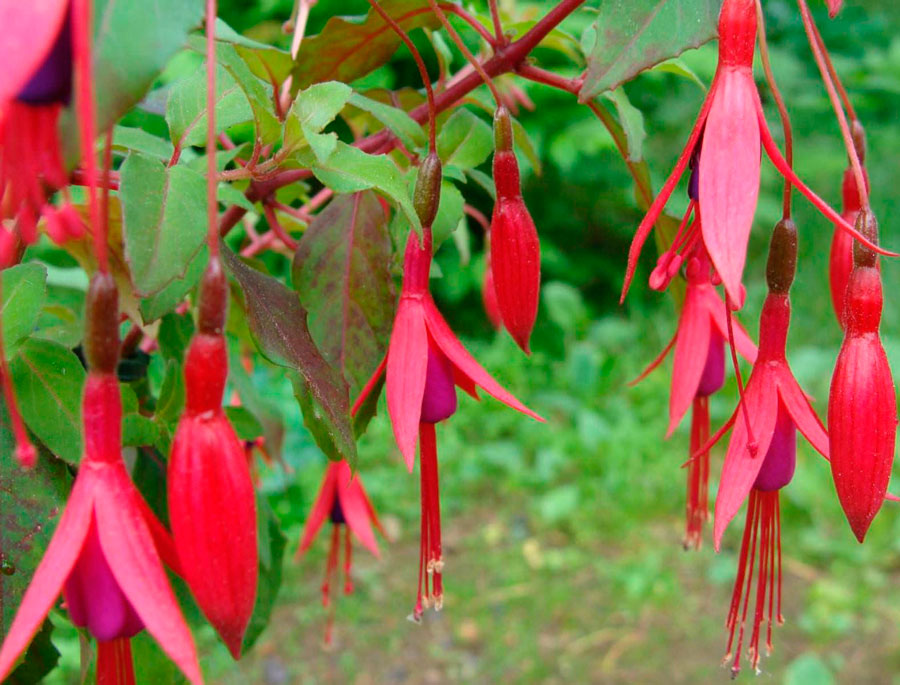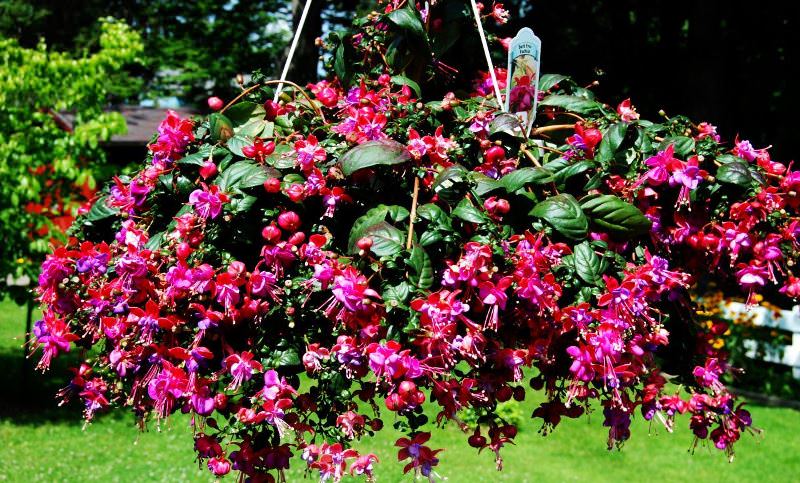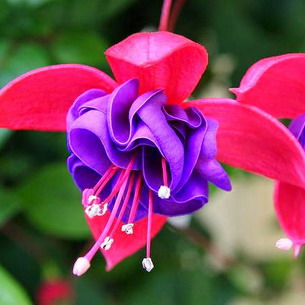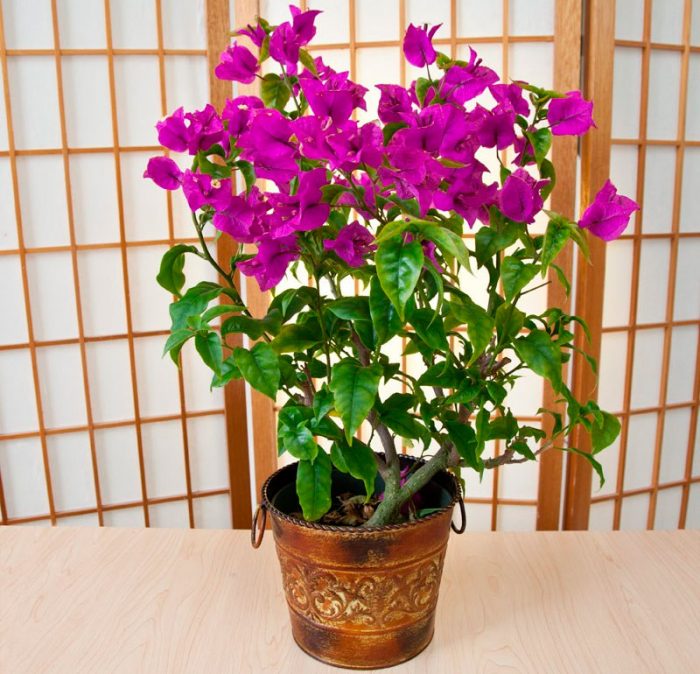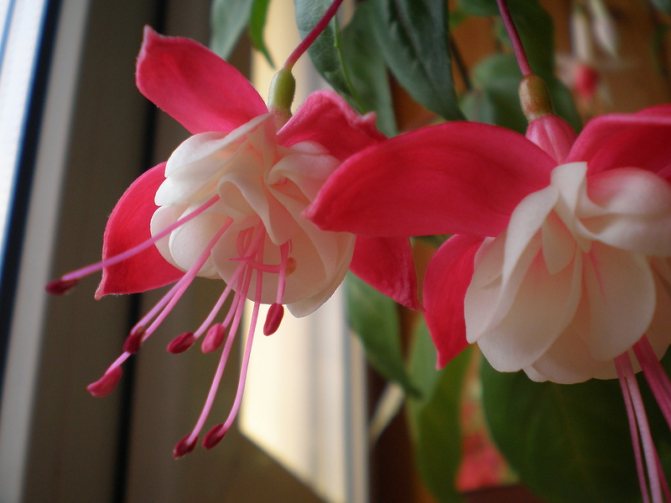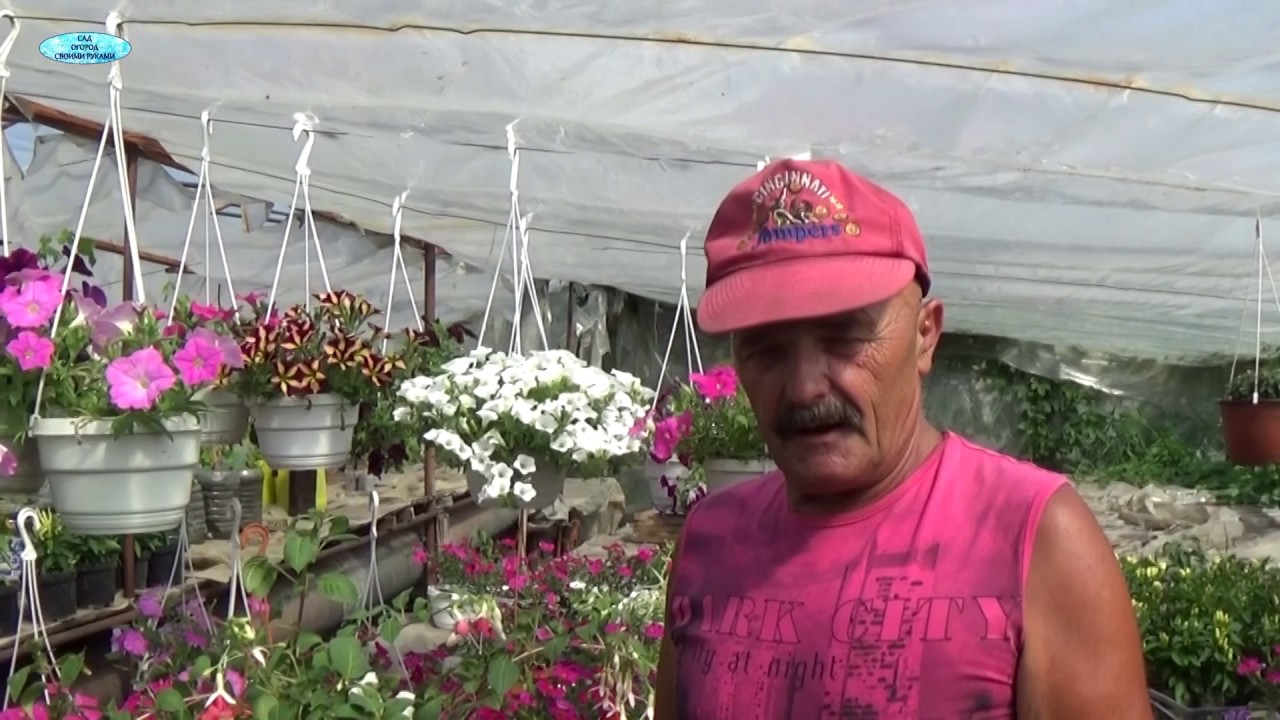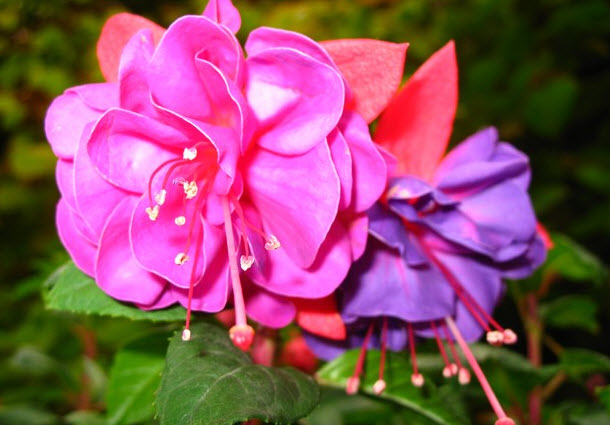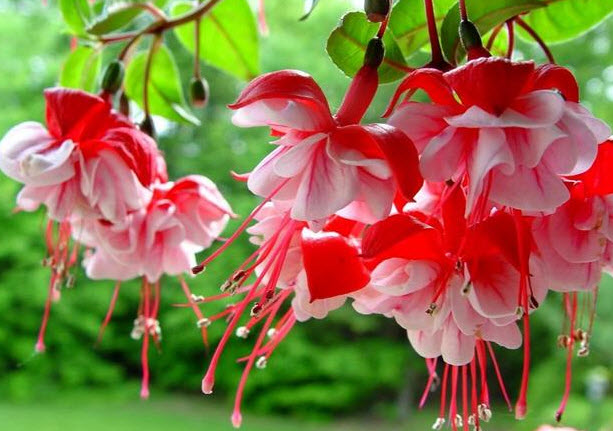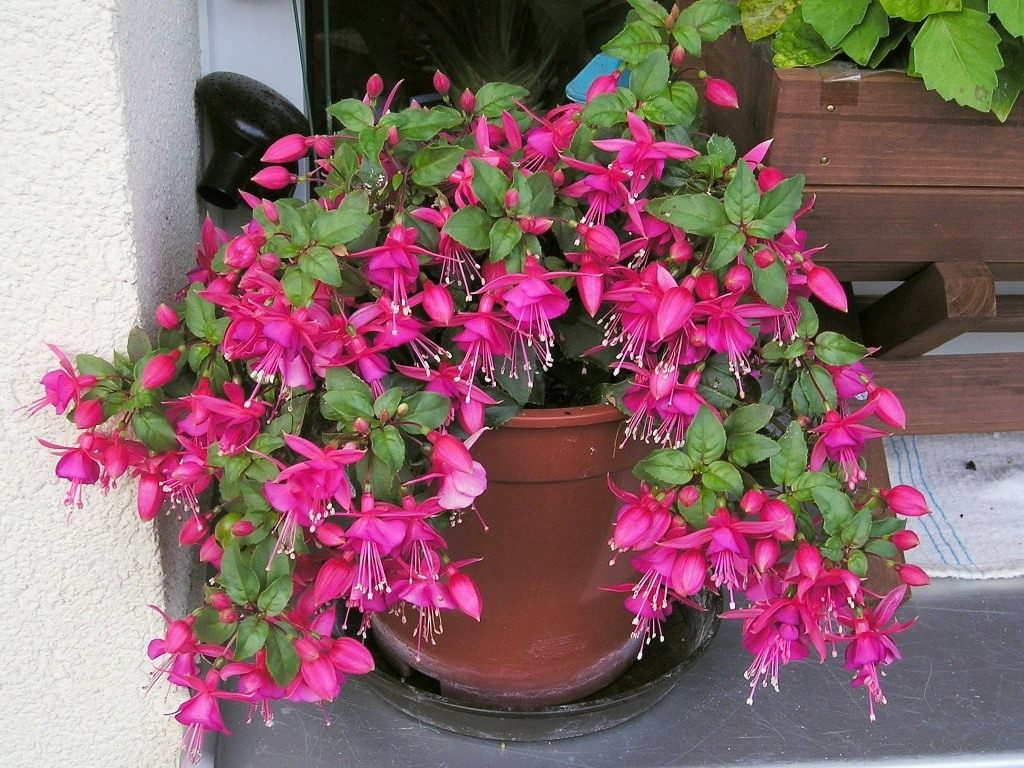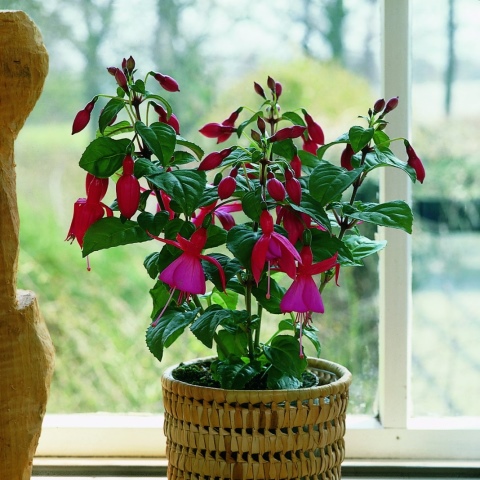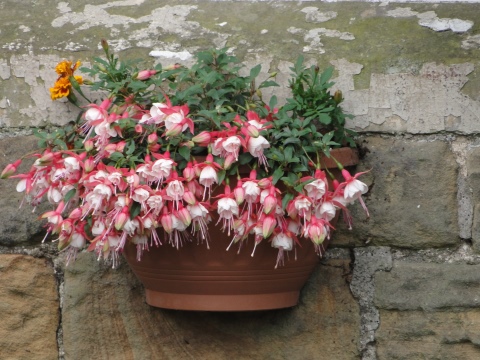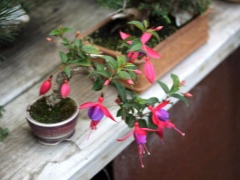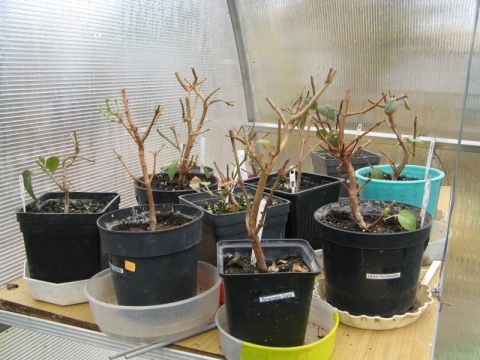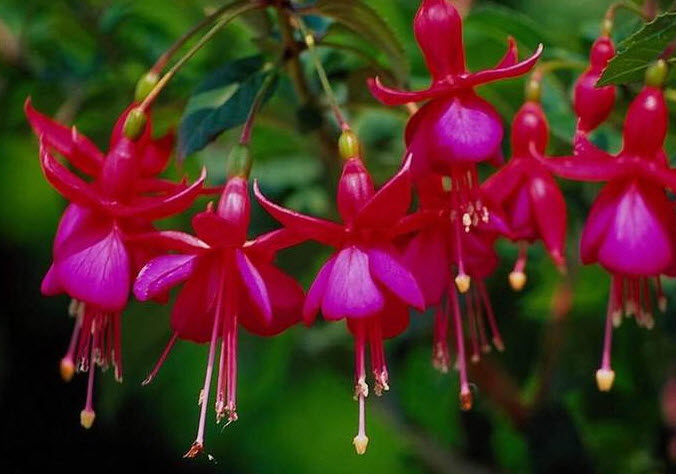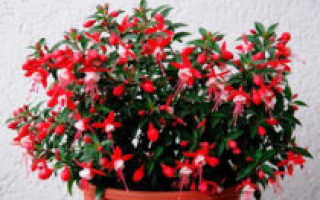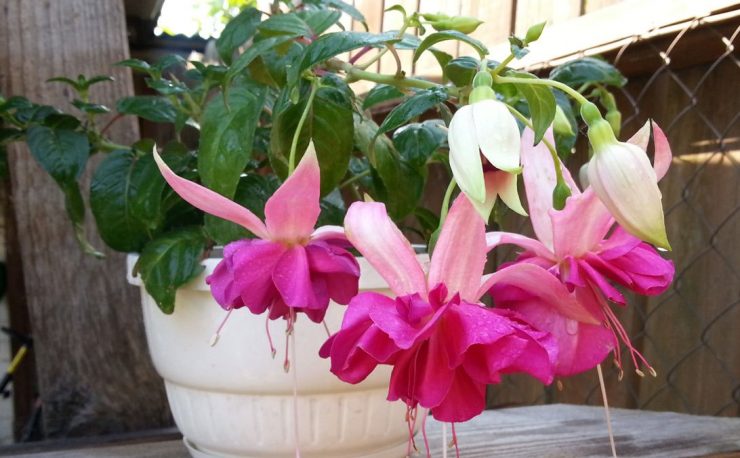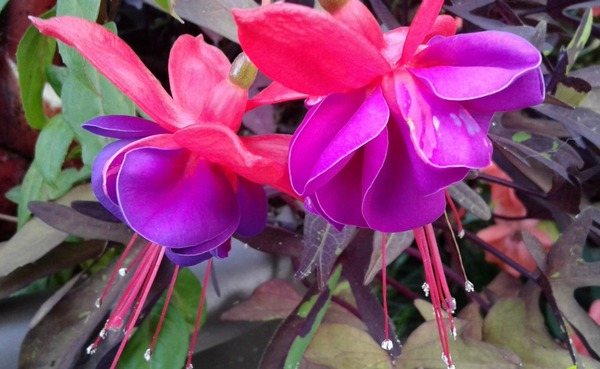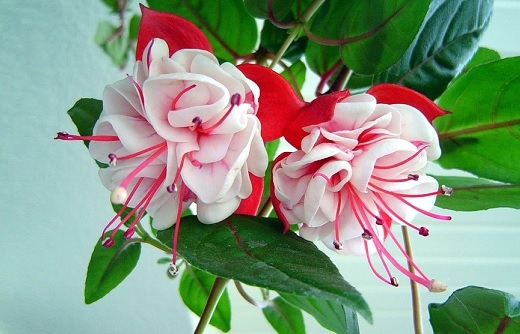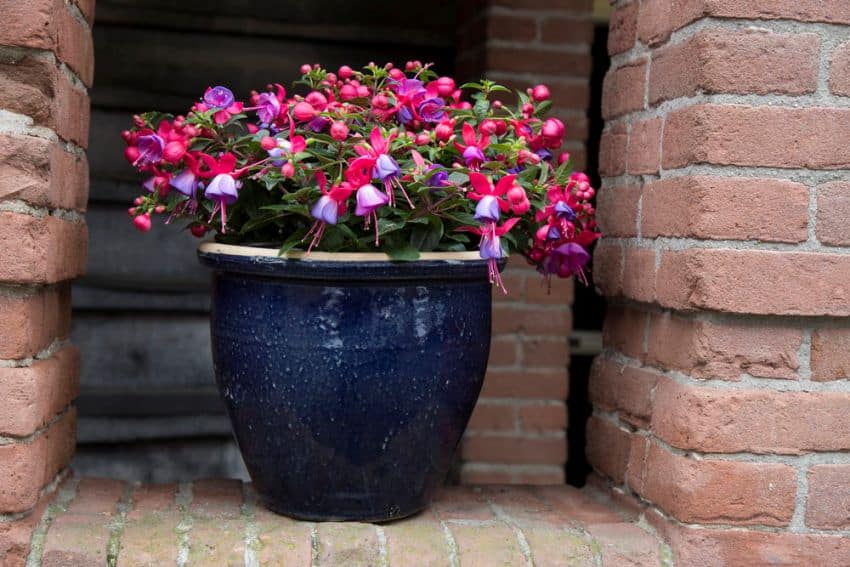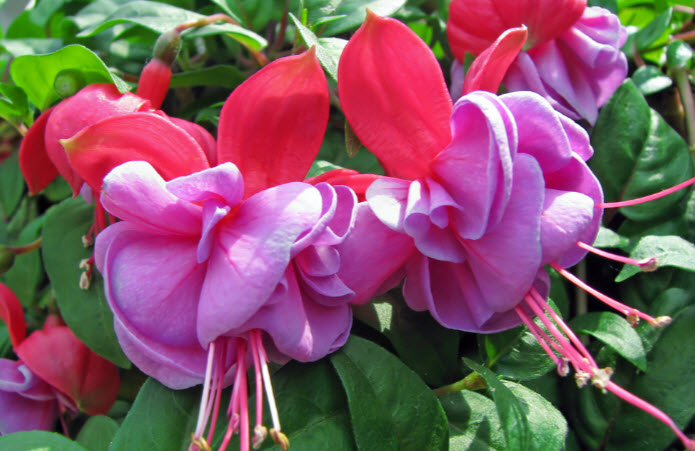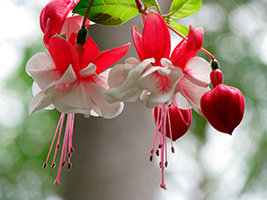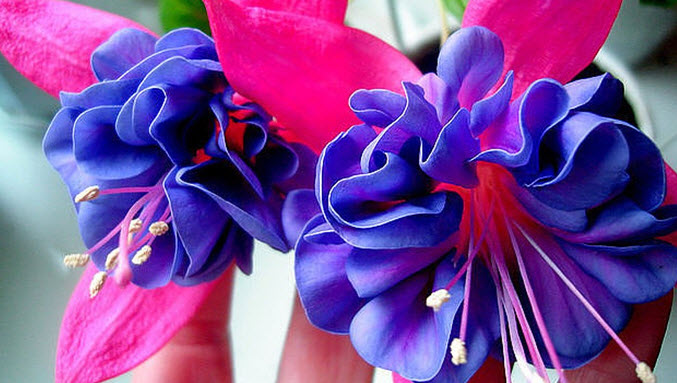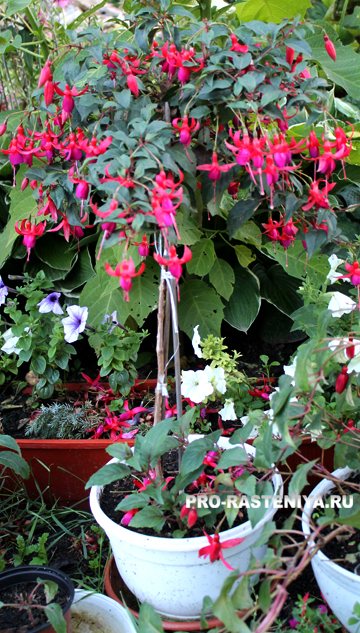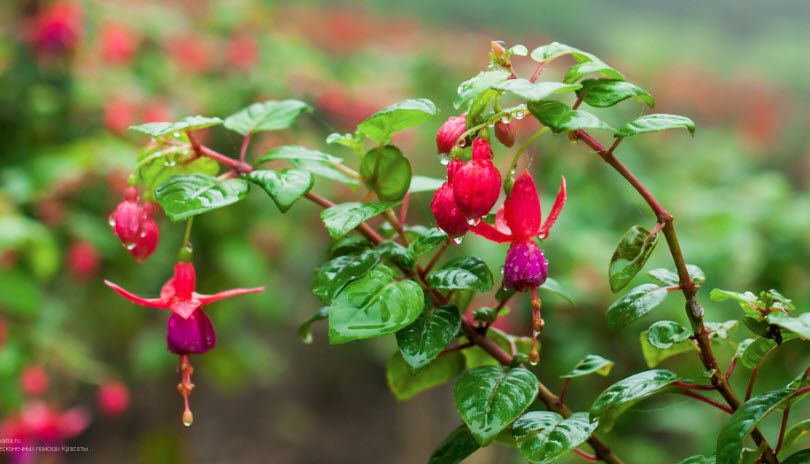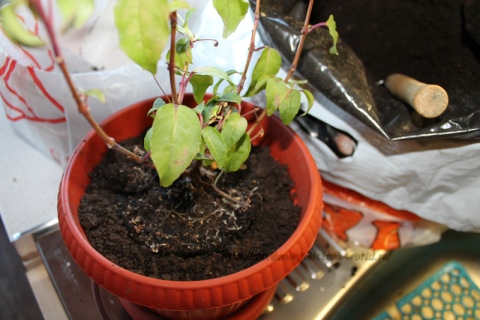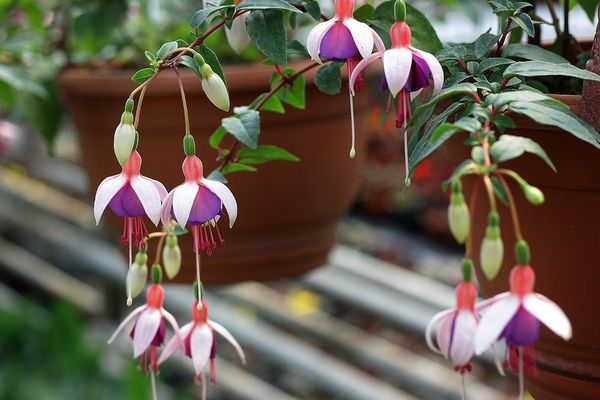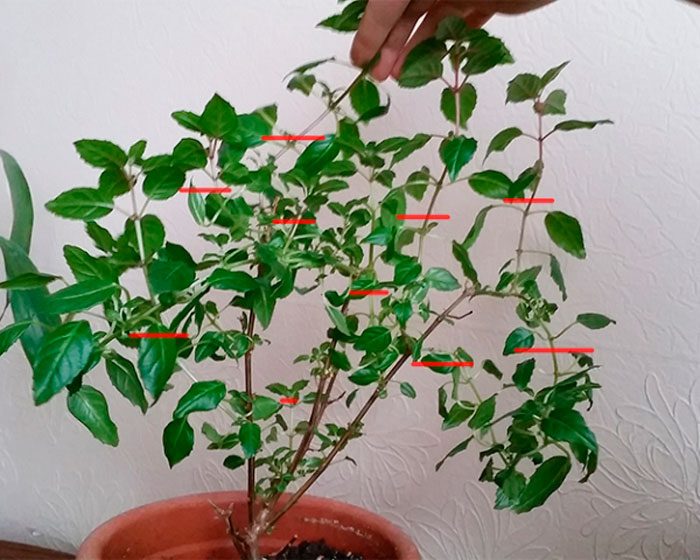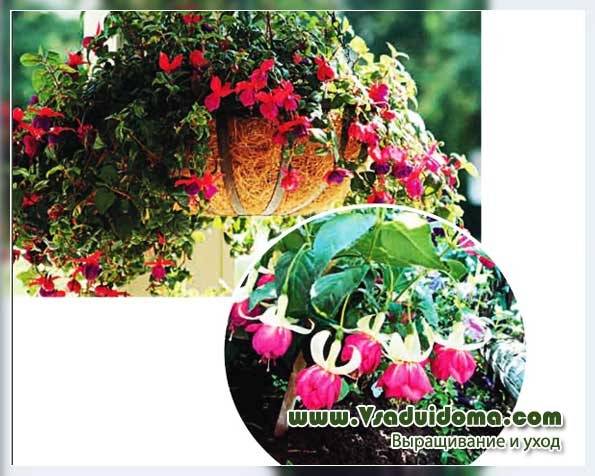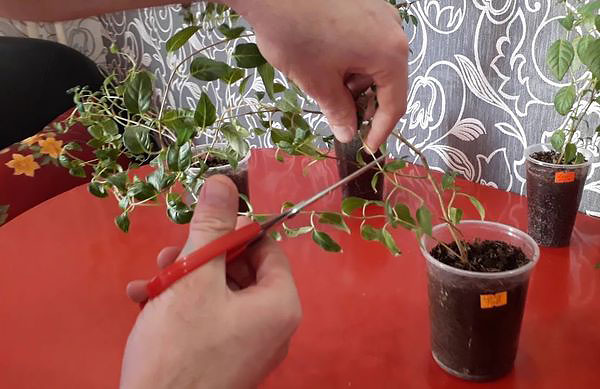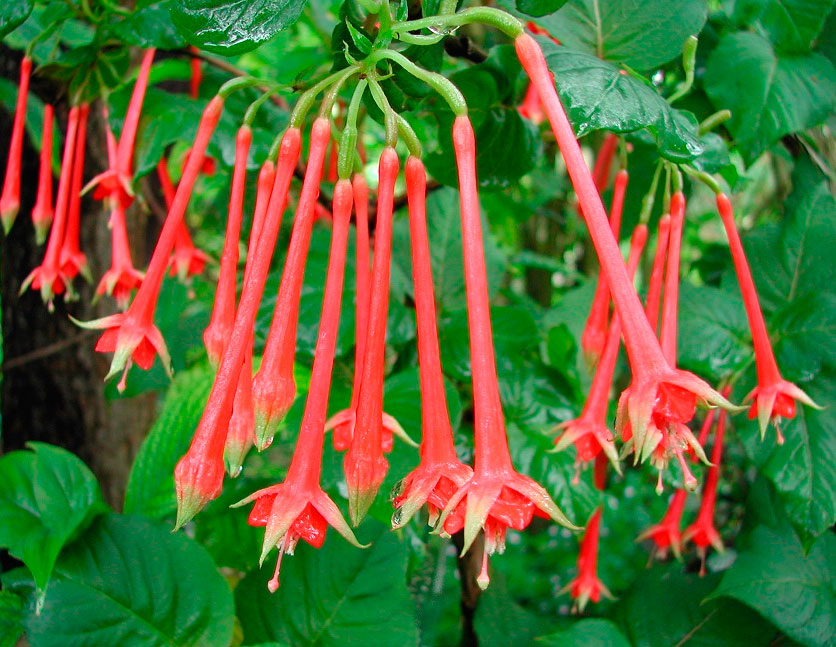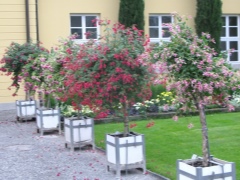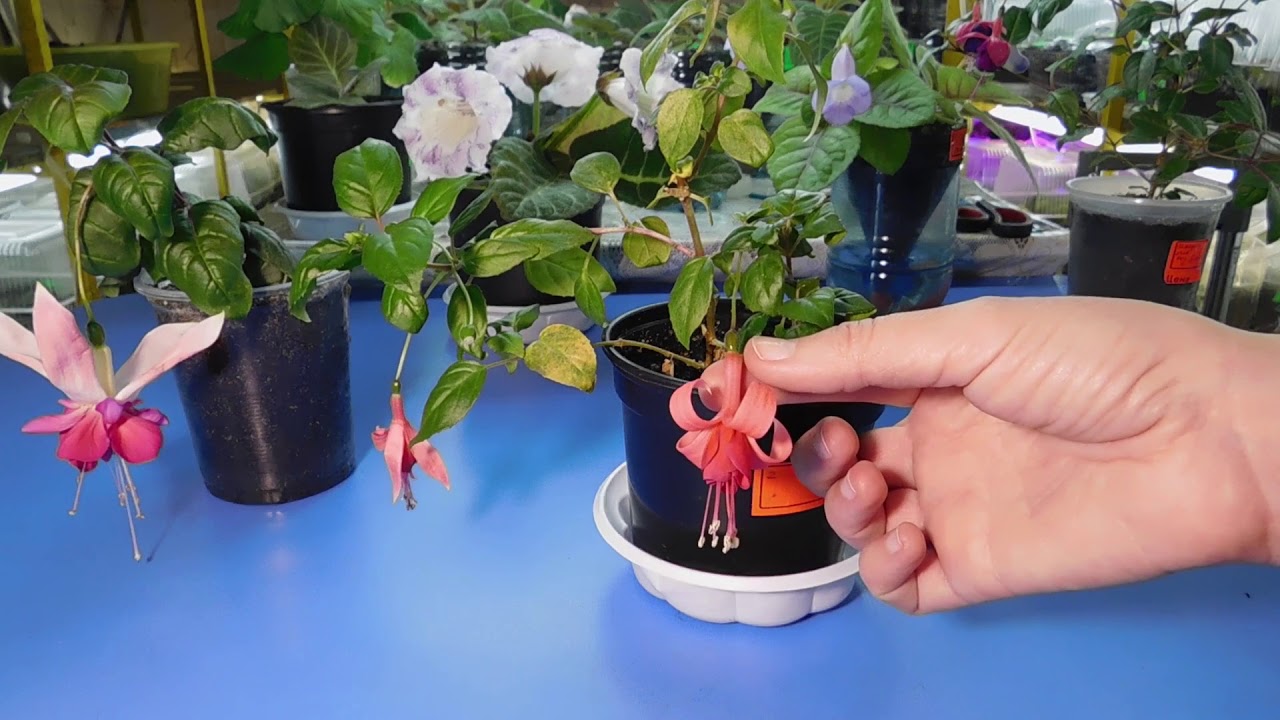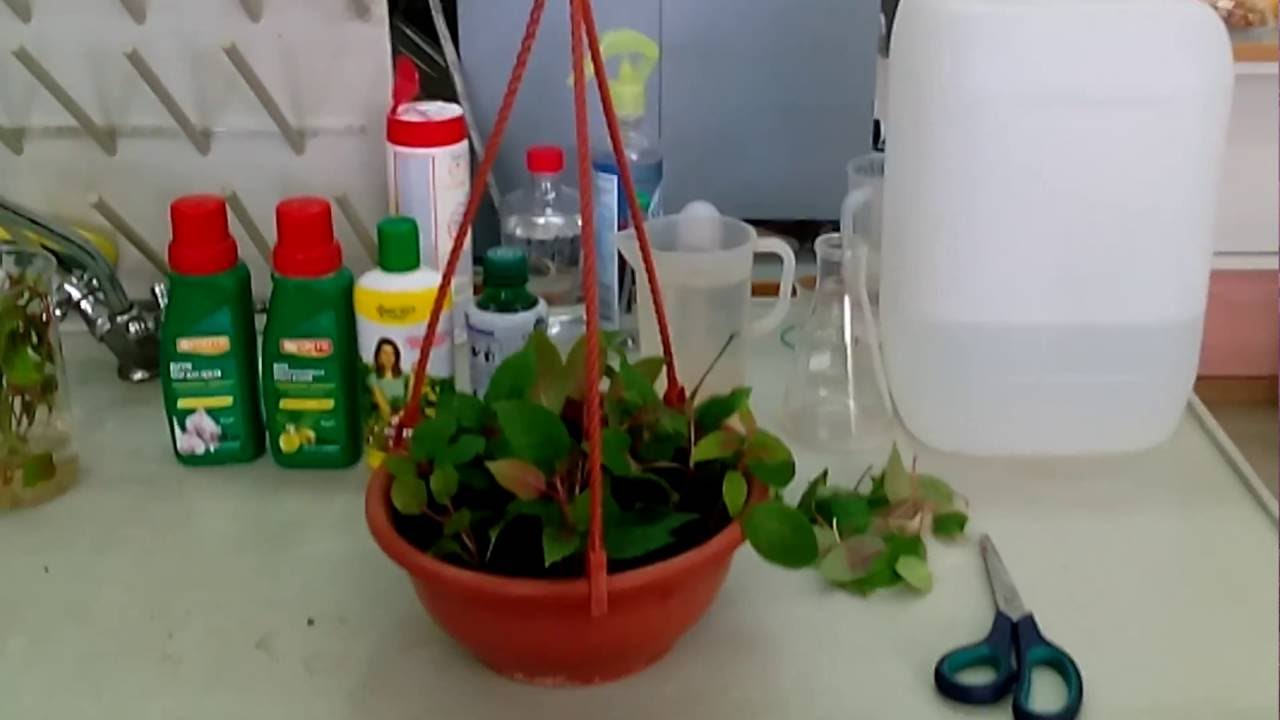Fuchsia propagation
If you want this perennial to produce many flowers every season, then you need to provide it with proper care. If such a need arises, it is possible to obtain planting material for reproduction from it. There are many opportunities for this, since young plants can be obtained both from seeds and from cuttings and leaves.
Seed propagation
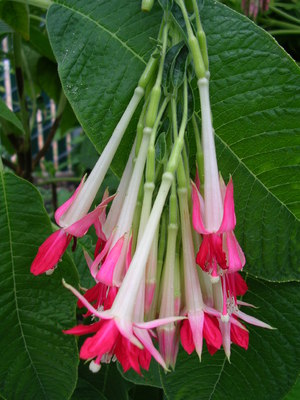 If you decide to get new fuchsia seedlings from seeds at home, then keep in mind that this process will take a lot of time and effort. The first step is to stock up on quality seeds. To do this, you need to constantly monitor the state of the mother plant, preventing self-pollination of its flower. This can be done by carrying out the following activities:
If you decide to get new fuchsia seedlings from seeds at home, then keep in mind that this process will take a lot of time and effort. The first step is to stock up on quality seeds. To do this, you need to constantly monitor the state of the mother plant, preventing self-pollination of its flower. This can be done by carrying out the following activities:
- removal of anthers from a recently opened flower;
- the transfer of the pollen of the parent plant on the stigma;
- protection of flowers after pollination by covering with a cloth or paper bag.
After a couple of weeks, the fetus reaches maturity. After opening it, the seeds are taken out and allowed to dry for several days. For planting, use shallow containers filled with a moist substrate. Seeds should be placed on the soil surface.
After sowing, the seed bowls must be transferred to the greenhouse, where the optimum temperature and good lighting must be created. Seeds germinate after 10-15 days. After another 1.5 months, the time comes for picking the seedlings. Subsequently, hardening of young seedlings is carried out, for which they need to be taken out into fresh air for some time. For the first time, hardening should be small - no more than 15 minutes, but in the future, the residence time of the seedlings is increased. After another two months, the seedlings are transplanted into separate pots.
How to grow properly?
From seed
If you decide to grow a flower from seeds, then all the features of growing should be taken into account:
- In the very first stages of formation, the seeds should be planted in a small box or glass with a soil consisting of turf, peat and sand (in a ratio of 3: 2: 1). At first, you should not use any fertilizers for seeds, you can only process the soil in which the seeds will be planted with a weakly concentrated solution of potassium permanganate.
- The seeds of this plant can be purchased at a flower shop, but you can get them yourself, for this you need to choose an already blooming fuchsia, choose two flowers from it (father and mother), then remove the anthers on them to pollinate. During the reproduction process, pollinated flowers must be covered with fabric bags. After about a month, the fruit obtained after pollination becomes ready, it must be dried and the seeds removed from it.
In March-April, the most optimal time for sowing seeds, even for your own, even for the store. The seeds are simply poured into sifted peat in boxes or glasses, and then the dishes are placed in trays with water so that the soil is well saturated with moisture. Then the seeds are mixed with sand and sown in the ground. The dishes with seeds should be covered with plastic wrap and left for 3-5 weeks.
- Seeds covered with foil must be constantly kept in damp conditions, so the soil must be soaked in water using a pallet. Lighting should be moderately bright and diffuse. The temperature should be maintained at about + 20C.
After the second leaves appear on the seedlings, they should be planted in separate plastic cups with holes at the bottom. Watering them should be moderate. Over time, when the plant becomes cramped in the cup, it will need to be transplanted into a larger pot.
You need to be very careful with seedlings and you need to replant them, leaving whole earth clods.
- During the growth of fuchsia, it is necessary to constantly pinch in order for the plant to be lush, and its flowering looks much more graceful. When growing a flower from seed, it needs to provide constant wintering. From the end of November, it is necessary to lower the temperature of the fuchsia habitat to + 5-10C. And also, the plant should be cut by winter.
In the garden
Fuchsia cannot constantly grow in the garden due to winter frosts (some hybrids are an exception), therefore, for the winter period, fuchsia will need to be transplanted into a pot and transferred to any room, this should be taken into account when planting a plant in the garden. We wrote in more detail about the features of wintering fuchsia here.
Growing fuchsia in the garden is quite difficult, so you need to take into account factors and features, such as:
- This plant is unpretentious to the soil, but nevertheless, fuchsia prefers light soil with neutral acidity. The soil should be fertile and well moisturized. Adult plants can be fertilized with both complex chemical fertilizers and natural compost or humus.
- When grown in the garden, preference should be given to proven store seeds. Sowing seeds should be done in March, in order to plant the plant in the garden in May. For germination of seeds, it is advisable to use transparent, spacious plastic dishes.
At the very beginning, the soil must be sprinkled with a weak solution of potassium permanganate, and in the future it must be constantly kept moist. This container with soil and seeds must be covered with foil and kept at a temperature of about + 20C.
- To form a flower with a bush, you need to trim fuchsia and pinch, as this will help the cultivation. Plant pinching is carried out in 3 stages, each of which takes about a month. At each stage, the upper part of each of the branches is removed, this is necessary in order for the plant to grow wider and to double the number of flowers. Pruning is done mainly for indoor fuchsias, it occurs in two stages - autumn and spring. In autumn, the parts on which the peduncles were are cut off from the plant. In the spring, all frail and dry parts of the flower are completely removed.
How to protect a flower from pests and diseases
This plant, due to its resistance to negative environmental influences and diseases, very rarely gets sick.
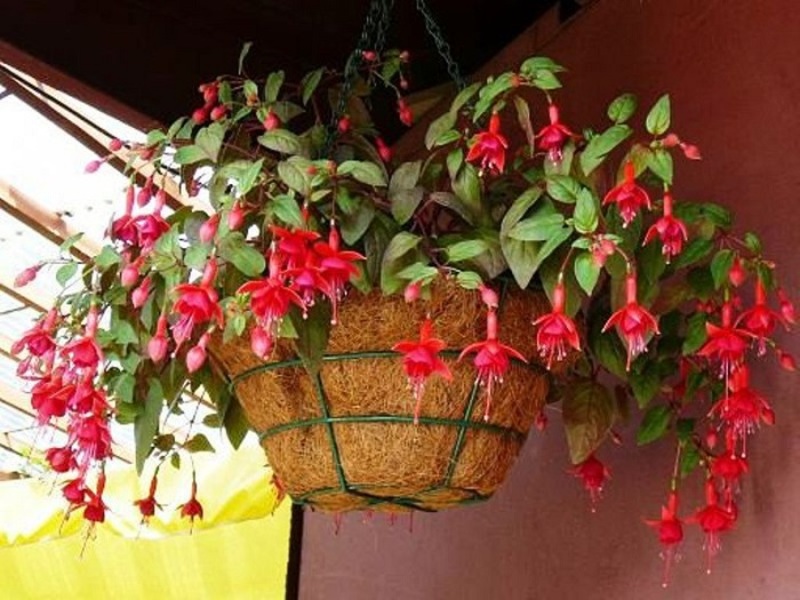
In the case of an increased level of humidity in the room, powdery spots may appear on the leaves. To combat them, it is effective to use a solution of water and foundation, prepared in a ratio of 11: 1. They are sprayed with a bush.
Healthy leaves of the plant have a pronounced green color.
The yellow color of the leaves indicates the presence of chlorosis. It occurs as a result of abundant watering of the bush or as a result of a lack of nitrogen and magnesium. If there is yellowness between the veins of the leaf, then the flower needs manganese.
Dry brown spots on the leaves indicate a lack of molybdenum
In addition, you need to pay attention to the roots of the plant, they must be white. The brown color of the root system indicates the defeat of root rot.
Its development is provoked by frequent watering.
If concentric circles of brown color were found at the bottom of the sheet, then it is recommended to remove them immediately. This is a sign of rust. Bushes are subject to processing with Topaz, Vectra, Bordeaux liquid, Cuproxat.
Spraying with fungicides should be carried out 2-3 times with an interval of 10 days.
Among the most common pests, white flies can be distinguished. These are small insects, their size does not exceed 2 mm. Because of the two pairs of white wings, this name was given.
White flies are members of the moth family. The location of the larvae is the lower part of the leaf.They cause their detrimental effect by sucking out the juice, leaving traces in these places in the form of white sugary formations.

If the leaves have too large a scale of damage, then soon they turn yellow and fall off.
In order to prevent mass contamination of the rest of the fuchsias, it is recommended to regularly inspect all plants. To combat them, such effective drugs as Angara, Actellik are used. Alternatively, you can use green soap.
Growing fuchsias at home allows you not only to embellish a room, veranda or loggia, but also to bring out specimens unusual in color. The main thing is to adhere to the basic rules of agricultural technology.
Fuchsias in the garden and at home Polina Kiseleva's collection
Fuchsia - Growing, Care, Transplanting, Reproduction at Home (50+ Photos & Videos) + Reviews
8.7
Total Score
Conclusion
8.3 Average score
Ease of care
7
Appearance
8.5
Bloom
8
Originality
9.5
9User rating
Ease of care
7.5
Appearance
9
Bloom
10
Originality
9.5
|
Reproduction
The practical actions of many gardeners have proven that the simplest and most effective way to propagate fuchsia is by rooting cuttings. The latter are obtained by pruning bushes after wintering, respectively, the breeding process should start at the beginning of March.
There are 3 options in total:
- cuttings;
- leaves;
- seeds.
Cuttings
The cuttings obtained after pruning must be rooted. Plain water is the best nutrient medium, but some varieties thrive better in soil mixed with sand, peat and a universal mixture.
Further, the observation is carried out for 10-15 days. If the shoot has sprouted new roots, it is necessary to continue observation for another 5-7 days, after which the flower is transplanted into a pot.
The diameter of the pot should not exceed 10 cm, otherwise the plant will spend too much energy on the formation of the root system, due to which the leaves and buds will be deprived of nutrients.
After a year, the flower can already be transplanted into a pot with a diameter of 15-20 cm, and the next season, the buds can be expected.
Leaves
This option is more labor intensive and time consuming. It is necessary to pick up a medium to large sheet with a long stem. The latter is planted in the ground consisting of a universal mixture and sand, and is abundantly filled with water. For 1-2 months, the leaf must be sprayed with warm water to maintain optimal conditions. Shoots should appear at the cut site. If this happens, it is worth reducing the number of sprays per day, and later completely abandon them. Further, the technology is no different from cuttings.
Seeds
The most long-term and difficult type of reproduction, which requires another flower for pollination. The resulting seed is buried in the ground at a depth of 3-5 mm. The first shoots should appear in two to three weeks, all this time it is necessary to spray the ground with warm water. Further, actions are carried out similar to removal with the help of cuttings.
Planting instructions
The easiest way to grow is to plant the fuchsia in a pot or hanging basket that will weigh on the veranda. This type of planting is not so problematic, because with the onset of frost, the flower can simply be brought into the house and not transplanted again. For experienced gardeners, it will not be difficult to plant a plant in a flower bed, but in this case, you need to think carefully about the planting site.
Fertilizer
It does not matter where in the garden the flower will be located in a basket or in a flower bed, the composition of the soil and fertilizers is of great importance. Before planting, it is necessary to apply a sufficient amount of humus and phosphorus fertilizers.
During flowering, you should also not forget about fertilization, as the flowers will quickly wither. Each plant needs to be fertilized from the moment of planting.
For fuchsia, the type of fertilizer can be distributed according to the growth phases:
- Young plants need a complex fertilizer that contains a large amount of nitrogen. This component of the fertilizer helps to accelerate plant growth and plant greenery.
- For a grown flower, fertilizers with a high content of potassium and phosphorus are best suited, which will help the plant to lay a large number of buds for flowering.
A good option for fertilization would be if you alternate mineral with organic. It should be remembered that high-quality fertilizers increase the decorative properties of the plant.
You should not fertilize the plant 2-3 weeks after transplanting (you can find out how to correctly transplant fuchsia and get abundant flowering here).
Reproduction
This plant has several methods of reproduction, including:
- Seed propagation: in order to obtain seed fuchsia, gardeners resort to artificial pollination. Gardeners like this type of reproduction, because by mixing several different varieties of plants, you can get a completely new one that is not like the rest. Seeds must be collected in dry and warm weather, and after harvesting, the material must be dried.
- With the help of cuttings: reproduction in this way must be done in March. For this, cuttings with a length of 5 centimeters or more are suitable. Usually they are first placed in water for rooting, after which, three weeks later, they are planted in a pot consisting of fertilizers and sand.
- With the help of leaves: this method is one of the longest. For this species, stalks with several leaves are chosen and carefully torn from the plant, after which, without germinating the roots, they are placed in loose soil 1 centimeter deep and covered with a lid. A plastic or glass lid is best. For successful germination, the leaves must be watered daily, sprinkling with boiled water. The plant will be ready for transplanting as soon as the roots appear.
Each type of germination is interesting in its own way, but the most common is growing with cuttings. This method is most effective for inexperienced gardeners.
The seed material for germination is obtained exclusively from ripe flowers.
Some nuances
You can grow fuchsia in the garden, but for this you need to spend time and be prepared for the fact that the plant does not take root. In order for the plant to take root in the flower bed, the following rules should be remembered:
- For planting, a plant is used that has already been growing in a pot for some time. You should not use recently sprouted flowers, they may not take root in the new soil.
- The landing site should be chosen carefully, without direct sunlight and drafts.
- No other flowers should grow near the chosen place, then one of the plants may die.
- It is only necessary to plant fuchsia in pre-fertilized soil and remember about feeding during the release of flowers.
Using such simple rules when planting a plant, you can achieve a good result. Then the plant will grow and release many new buds, while delighting the gardener.
Growing conditions
Among indoor and garden flowers, fuchsia is far from the most demanding plant. It can be grown in a pot, the volume and size of which will allow it to be used both in the garden and in the room.
Lighting
Fuchsia loves the sun, but grows in slightly shaded conditions. Leaving a flower on a south-facing balcony can burn flowers and leaves. The same can happen on the south window in the apartment.
In autumn and winter, when the sun's rays are quite small, backlighting is also necessary for this plant. The flower should receive light for 12 hours daily.
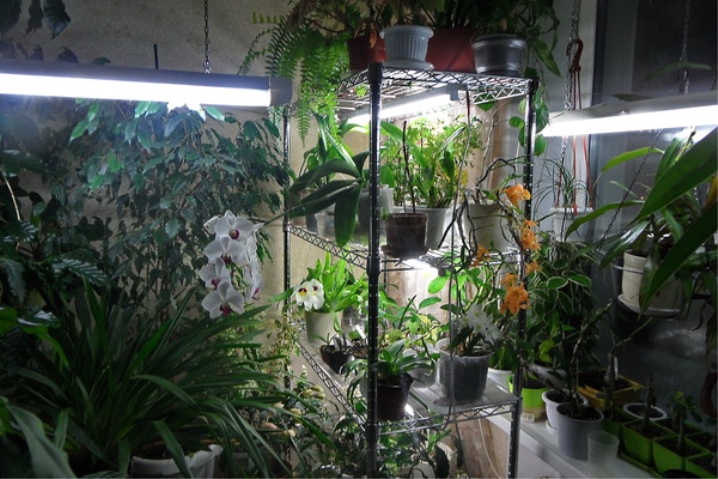
The soil
Any land with good drainage is suitable for a perennial. Perlite, vermiculite or expanded clay are used as drainage. You can make a fertile soil composition yourself, using humus, peat and sand in proportions of 3: 2: 1.
For good growth and development of fuchsia, loose and nutritious soil mixtures are needed that are able to absorb water and perform air exchange. The reaction of the soil should be slightly acidic or neutral. If the plant is planted in a soil poor in nutrients, and even with a pronounced alkaline reaction, the perennial will very quickly begin to rot, the color of its foliage will lose its brightness, flowering will be poor, or the plant will completely drop the collected buds.
If there is no opportunity for self-preparation of the soil substrate, it can be purchased ready-made by visiting a specialized store.

Fertilizers
To make fuchsia grow vigorously and bloom profusely, the plant needs to be fed. But you can apply fertilizers only 1 month after you have completed the annual spring flower transplant. The frequency of feeding is once a week. Use ready-made mineral compositions for flowering plants. During the period when you grow a seedling or form a standard tree, fuchsia must be supplied with nitrogenous compounds.
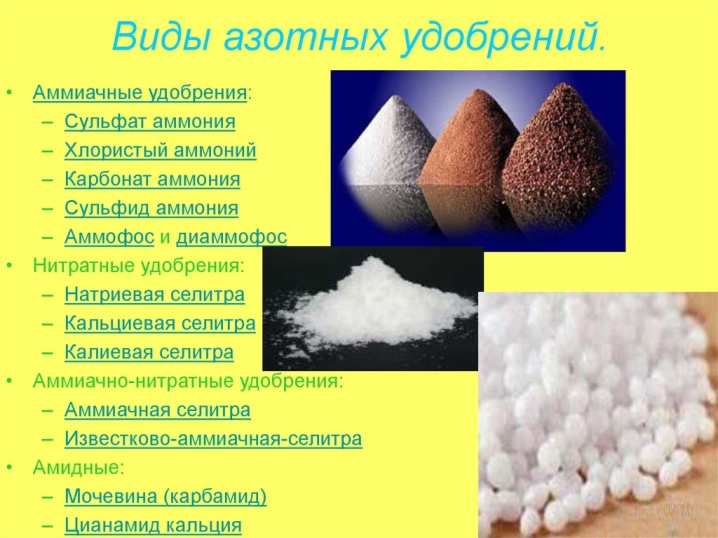
Some drugs, for example, "Epin", are not introduced into the ground; they need to be sprayed with the plant to enhance its growth and acclimatization. Fuchsia is fertilized with bone meal powder, which is spread over the soil surface and then watered. It is enough to make 1 tbsp. l. funds for a pot with a medium-sized plant.
Overfeeding is harmful to the plant. An excess of minerals will force the perennial to grow foliage, but it will bloom poorly - the peduncles will be weak and few of them are formed. Fertilize in the spring and summer, and let the flower rest in autumn and winter.
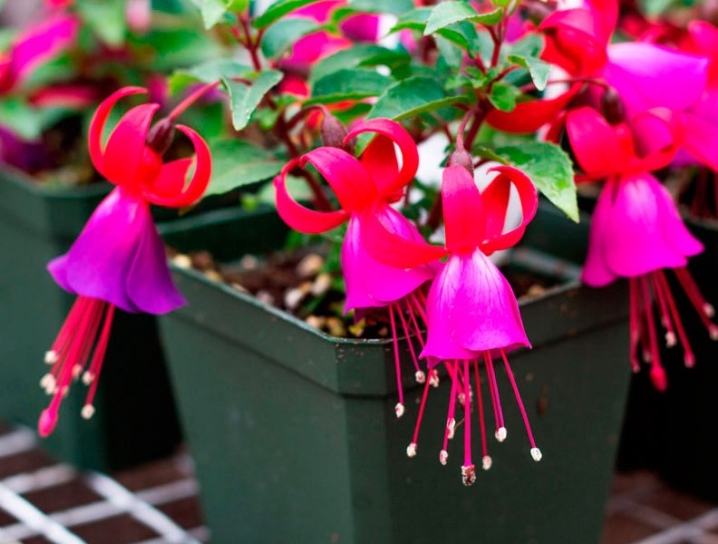
The most common varieties
Many modern varieties are characterized by vibrant color combinations.
Fuchsia Blue Vale
This is a versatile variety, it can be grown both as a bush form and as an ampel. Snow-white sepals of double, large flowers have a green tint along the edge. The skirt of the flower is lush, lavender.
Long-lasting flowering, very abundant.
Fuchsia Bella Rosella
The plant has some of the largest flowers (10-12 cm). They are terry, bright, lilac-pink with snow-white stamens and pale pink sepals. Abundant flowering, long lasting.
Fuchsia Bella Rosella has an ampelous and bush form. It is unpretentious, can grow in shade.
Bella Rosella variety
Fuchsia Blue Angel
Blue Angel is a sophisticated, memorable fuchsia. Flower size up to 12 cm in diameter. The corolla (skirt) of the flower is terry, dark lilac in color, the sepals are white. In full dissolution, white stamens with pink anthers become a spectacular accent. Semi-ampelous bush (drooping).
Fuchsia Hollis Beauty
The flowers are large (7-8 cm), double, the sepals are white, the skirt is lilac-blue. The bush grows very neatly, has a compact shape, branches well. The variety tolerates heat and bright sun better than other fuchsias.
The flower is elegant, contrasting, white-green sepals set off a purple-pink skirt. Particularly good at full dissolution. Pink elongated stamens set off milky white anthers.
Important! The form of cultivation is ampelous, the whips of an adult plant grow in length up to 60 cm
Fuchsia Blue Ice
The plant was obtained as a result of the starting mutation of the Dark Eyes cultivar in 1954 in the United States of America. Large, double flowers are distinguished by a characteristic arrangement of petals. They resemble a layered petticoat. The color of the petals is dense lavender, the sepals are light crimson. Interestingly, in plants of this variety, flower petals can vary in color intensity. The variety is undemanding, it is grown in bush and ampelous forms. Grows quickly, restraining pruning is recommended to form a dense crown. Feels good in partial shade.
Fuchsia Bisentenial
Fuchsia ampelous Bicentennial is painted in salmon orange tones. The characteristic magenta strokes along the edge of the multi-layered skirt create an extraordinary color contrast.The flowers are elongated, rather large, in the form of buds. Light sepals turn bright orange over time.
The variety was bred by Californian gardener Ted Paskesen in 1976 and is dedicated to the 200th anniversary of US independence. Pasquesen carried out a long selection work to obtain a variety that is resistant to heat and strong winds.
The plant forms a dense, branching crown, blooms profusely.
Blue mirage variety
Fuchsia Blue Mirage
The plant can be grown as a semi-ampelous plant, in the form of a drooping bush and in hanging containers.
The blue mirage is a large-flowered variety that blooms with deep purple flowers with snow-white sepals. The length of the shoots in the variety is up to 40 cm. Early flowering, abundant, long. The flowers are double, large.
The leaves are medium in size, the stems lignify quickly, so the variety is easy to grow in standard form. The variety is fast growing, winters well. Suitable for growing novice gardeners.
Fuchsia Cecile
Flowers are large, double, have a bright, unusual combination of shades. The wavy, layered petals are lavender blue and the sepals are deep pink. Fuchsia of the Cecile variety is grown in bush and ampel form.
The vessel of the company One "Proposal"
The unique purple-pink color has become the hallmark of the flower, it is not for nothing that one of the first synthetic dyes, fuchsin, got its name.
The ships of the Japanese company ONE (Ocean Network Express), which is engaged in container shipping, cannot be confused with others. Their signature color is fuchsia.
Photo 7 Motor ship "Fuchsia"
No less "glamorous" pleasure catamaran "Fuchsia" runs along the Moskva River.
Taking care of fuchsia is easy. If you create optimal conditions for the plant, elegant lantern flowers will create a bright mood for many years.
Care
Breeding roses with cuttings at home
After the petioles have been planted and greenhouse conditions have been created for them, they must be ventilated every day (1-2 times). Moisten the soil periodically, preventing the earthen coma from drying out.
When the plant gets stronger, it is transplanted into a more spacious pot (preferably ceramic, this will protect the culture from overheating in summer).
Fuchsia in a pot
The plants are fed during the flowering period with potassium-phosphorus substances. As needed, they cut off dried flowers, form a crown, loosen the soil, spray a bush. Fuchsia is transplanted in the spring.
Watering
Fuchsia is picky in terms of leaving. It is very easy to look after her. As for watering, do it as the topsoil dries out. In winter, moisture should be moderate. Use only settled water at room temperature. It is much healthier and softer. At the end of the growing season, reduce watering. For the period October-November, completely stop humidification. At low temperatures, watering fuchsia should be reduced to 1-2 times a month.
During the growth of the plant, it is useful to spray it with a spray bottle. Do this in the morning and evening. To humidify the air, place a small pebble cup filled with water near the container with a flower. In autumn and spring, an excess of moisture is not recommended, so stop spraying.
We talked in detail about caring for fuchsia at home and other important points of growing a flower in our article.
Fuchsia transplant
Fuchsia needs an annual transplant, which is carried out in the spring. A mixture of sod, leafy soil, peat, sand and humus in equal parts is used as a substrate. A drainage layer is required, for example, from expanded clay. It is best to transplant fuchsia by the transfer method: a little soil mixture is poured into the pot on the drainage layer, then the plant is transferred there along with an earthen lump, then the voids are filled with the soil mixture. The transplanted fuchsia is placed in a well-lit place, the stems are cut one third of the length, sprayed and watered well.If you do everything right, the fuchsia will bloom abundantly.
Fertilizing fuchsia
Fuchsias growing in the open field are best fed with biological fertilizers. Fuchsia at home reacts perfectly to feeding with ready-made complex fertilizers for flowering plants, which are applied once every two weeks during the growing season. In these fertilizers, as a rule, there is no nitrogen component or it is very insignificant. In the winter months, a dormant period sets in, and the plant will not need feeding.
Pruning homemade fuchsia
Experts suggest pruning indoor fuchsia twice a year: at the end of the growing season - in early October, and in winter - at the very beginning of January. The first pruning involves the removal of all faded branches at a height of 2 cm from the dormant buds located in the axils, which are easy to find by carefully examining each branch. After pruning, you can start removing pests, seed pods that you don't need, and waste flower stalks. The second pruning takes place in January and represents the final formation of the crown of the plant.
Pinching the cutting
A young plant is usually pinched three times, each time removing growth points from new shoots. The first time they pinch one available shoot. The second time - in two newly formed cuttings, the growth points are again pinched (there are already two of them). And the third time, having cut off all the growth points, they get a rather fluffy bush with many formed shoots.
Duplicate pinch
The method allows you to very quickly form a plant. Pinching of new shoots is carried out without waiting for the growth of internodes
This method of formation must be done carefully, since the mass of the resulting branches is very large.
You can pinch the plant at any time of the year, the only condition is that two months before the expected flowering, the formation must be suspended.

